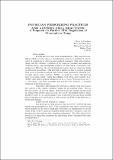| dc.contributor.advisor | Hutt, Peter Barton | en_US |
| dc.contributor.author | Corrigan, Kerry A. | en_US |
| dc.date.accessioned | 2012-07-06T21:59:54Z | |
| dc.date.issued | 1995 | en_US |
| dc.identifier.citation | PHYSICIAN PRESCRIBING PRACTICES AND ADVERSE DRUG REACTIONS: A Proposal for Further FDA Regulation of Prescription Drugs (1995 Third Year Paper) | en |
| dc.identifier.uri | http://nrs.harvard.edu/urn-3:HUL.InstRepos:8965602 | |
| dc.description.abstract | In 1938 the Food and Drug Administration (FDA) adopted regulations which created a category of prescription drugs to be distributed only by order of a physician or other licensed medical personnel. This categorization, along with the extensive regulation of the approval, labelling and marketing of human drugs, has substantially reduced the risks which accompanied self-medication. However, the current regulatory regime does not place any limits on physician prescribing. This shortfall in regulation fails to protect patients from poor prescribing practices and exposes these patients to otherwise preventable adverse drug reactions (ADRs). Attempts to remedy this shortfall have been unsuccessful. Under the existing Food, Drug and Cosmetic Act (FD&C Act) and its judicial interpretation in An~rican Pharmaceutical Ass 'n v. Weinberge , the FDA seemingly does not have the authority to regulate physician prescribing practices. | en |
| dc.language.iso | en_US | en |
| dash.license | LAA | en_US |
| dc.subject | Food and Drug Law | en |
| dc.subject | physician prescribing practices | en |
| dc.subject | off-label | en |
| dc.title | PHYSICIAN PRESCRIBING PRACTICES AND ADVERSE DRUG REACTIONS: A Proposal for Further FDA Regulation of Prescription Drugs | en |
| dc.type | Paper (for course/seminar/workshop) | en_US |
| dc.date.available | 2012-07-06T21:59:54Z | |
| dash.authorsordered | false | |


